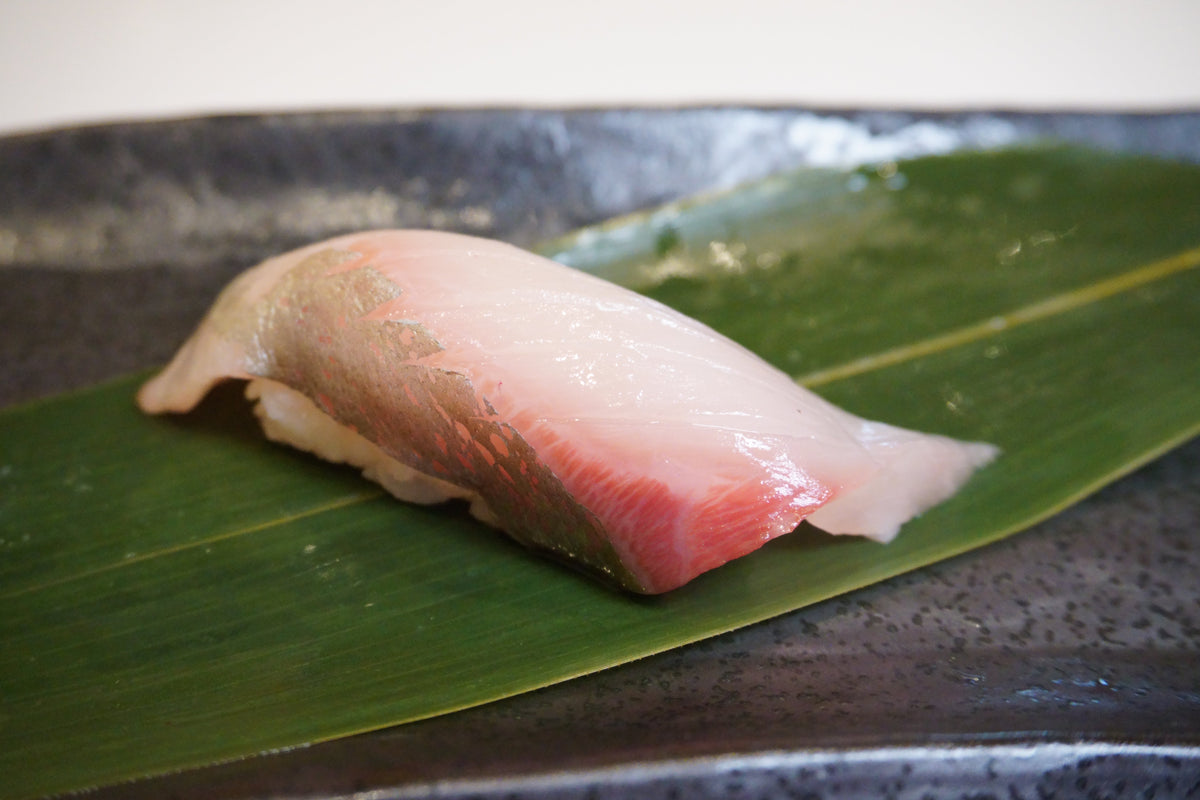Shima-aji 縞鯵 / Striped Jack
Shimaaji: The Striped Star of Summer Sushi
When summer rolls around in Japan, sushi lovers start craving something special—and Shimaaji, also known as Striped Jack, quietly takes center stage. It’s not as famous as tuna or yellowtail, but among sushi connoisseurs, it’s considered a hidden gem of rich flavor and elegance.
Where Does Shimaaji Come From?
Shimaaji is found in the ocean waters stretching from Japan’s Kanto region down to the Indian Ocean. You’ll often find it swimming near islands like the Izu Islands, which is actually how it got its name “Shima” (島) means island in Japanese.
Interestingly, young Shimaaji have a distinctive yellow stripe running down their bodies, so “Shima” can also be written as 縞, which means stripe.
Its Life in the Ocean
Shimaaji live in open waters. While young, they take shelter in floating seaweed on the ocean surface. As they grow, they venture deeper, settling in waters around 100 meters. These fish migrate with the seasons moving north during spring and summer, and heading south in autumn and winter. They travel in schools and feed on shrimp, squid, and small fish, making them quick and agile predators.
So… What Does Shimaaji Nigiri Taste Like?
In a word: Luxurious. Wild-Shimaaji caught in summer offers a refined, smooth texture and just the right amount of rich fat. Compared to its cousin, the common horse mackerel, it’s sweeter, softer, and much more umami-rich, closer in flavor to yellowtail (buri). The best-tasting ones usually weight 1–2kg, and can sell for as much as ¥10,000–¥20,000 (approx. £50–£100) per fish.
Why Is It Hard to Find Natural Shimaaji?
Unfortunately, true wild Shimaaji is incredibly rare today, around 99% of the ones on the market are farm-raised. Some sushi chains import similar species like Bigeye Trevally or Golden Trevally from New Zealand and label them “Shimaaji.” While visually similar, these fish lack the fat content and complexity of real Striped Jack.
Farmed Shimaaji has become the norm, and while it’s more accessible, it doesn’t quite match the unique richness of the wild variety. In fact, wild Shimaaji can cost five times more than farmed ones due to its rarity and superior flavor.
How to Keep It Fresh
Whether you’re a chef or a home cook, freshness is everything when handling Shimaaji. To maintain its quality:
-
Keep the fish surface from being exposed to air for too long
-
Clean and rinse it with fresh water as soon as possible
These steps help preserve its delicate flavor and firm texture.
Ideal Temperatures for Perfect Sushi
Great sushi isn’t just about freshness , it’s about temperature harmony:
-
Sushi rice (shari): 36–38°C (close to hand temperature)
-
Toppings (like Shimaaji): 20–22°C (cool but not cold)
This contrast allows each element to shine on the palate.


Enjoy!

